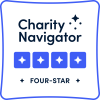Executive Director's Letter
February 24, 2015
 In Baltimore City Paper, on The Marc Steiner Show, at community conversations like Art-Part’heid and elsewhere, the cultural community has a renewed sense of urgency to discuss and address issues of diversity, inclusion, equity, and racial justice in the creative sector. At the same time, artists like Paul Rucker are responding through their work in provocative, insightful and fierce ways to recent events that have brought to life a continued and systemic inequality in our society.
In Baltimore City Paper, on The Marc Steiner Show, at community conversations like Art-Part’heid and elsewhere, the cultural community has a renewed sense of urgency to discuss and address issues of diversity, inclusion, equity, and racial justice in the creative sector. At the same time, artists like Paul Rucker are responding through their work in provocative, insightful and fierce ways to recent events that have brought to life a continued and systemic inequality in our society.
Sadly, these aren’t new conversations and despite the good intentions of well-meaning people, not enough has changed over the last 30 years in nonprofits in general, and cultural organizations specifically. And yet, we are the sector that should be leading the charge. If creating real change is the goal, the cultural community is both more capable and has more responsibility to do so. It is a moral imperative.
Candidates of color are not being hired (see below about the consequences of subconscious bias). Second, organizations representing communities of color don’t receive as much support (for more on that check out Vu Le's article about community engagement efforts).
A recent study by Community Wealth Partners in partnership with the Annie E. Casey Foundation finds that nonprofit staff, boards, and leadership remain overwhelmingly white and lack the perspectives of people of color. Is it any wonder then, that policies, programming, and funding firmly reflect the experiences and subconscious bias of whites and don’t give enough space or support to organizations that reflect the rest of America? If we truly want change, we need to better understand and be honest with ourselves about why this is happening.
GBCA has been extremely fortunate to work with Baltimore Racial Justice Action (BRJA) as part of the first full year of the Urban Arts Leadership Program. BRJA has given not only the UALP Fellows, but also our facilitators, staff, and partner organizations a deeper and admittedly uncomfortable, sometimes painful dive into understanding the ways in which we are perpetuating the status quo—an important step toward embracing change.
The work is meant to help organizations like our own to create a deeper awareness of the pervasive, structural, and insidiously subconscious racism that prevents us from doing what is not only right, but also happens to be best for our organizations and our art. (For more on quantifying subconscious bias, see Nicholas Kristof’s Straight Talk for White Men.) This is just a first step on a long journey and what promises to be years of work for all of us, but I am personally thankful to Avis Ransom and BRJA for challenging us and to our wonderful partners who are opening their hearts and minds to this work, to UALP founder David Mitchell, and to our brave and brilliant Fellows for leading the way.
Best,
Jeannie
More from the Community Wealth Partners report:
“Through this research, we identified implicit biases throughout critical points in the hiring process that explain why staff at organizations continues to be predominantly white. The fact is that organizations rely heavily on existing staff, who are predominantly white, to pass along job openings through their networks, which are often homogeneous. The result is that white staff members are generally spreading the word regarding job openings through a largely white network, creating a perpetual cycle of hiring on repeat. For those people of color that do submit resumes, controlled studies have found that subconscious biases exist, resulting in individuals with white-sounding names being 50% more likely to get an interview. For those people of color that do get an interview, controlled studies again have found bias where white interviewers recommend a black candidate significantly less often than a white candidate with the identical credentials.”

 In
In 